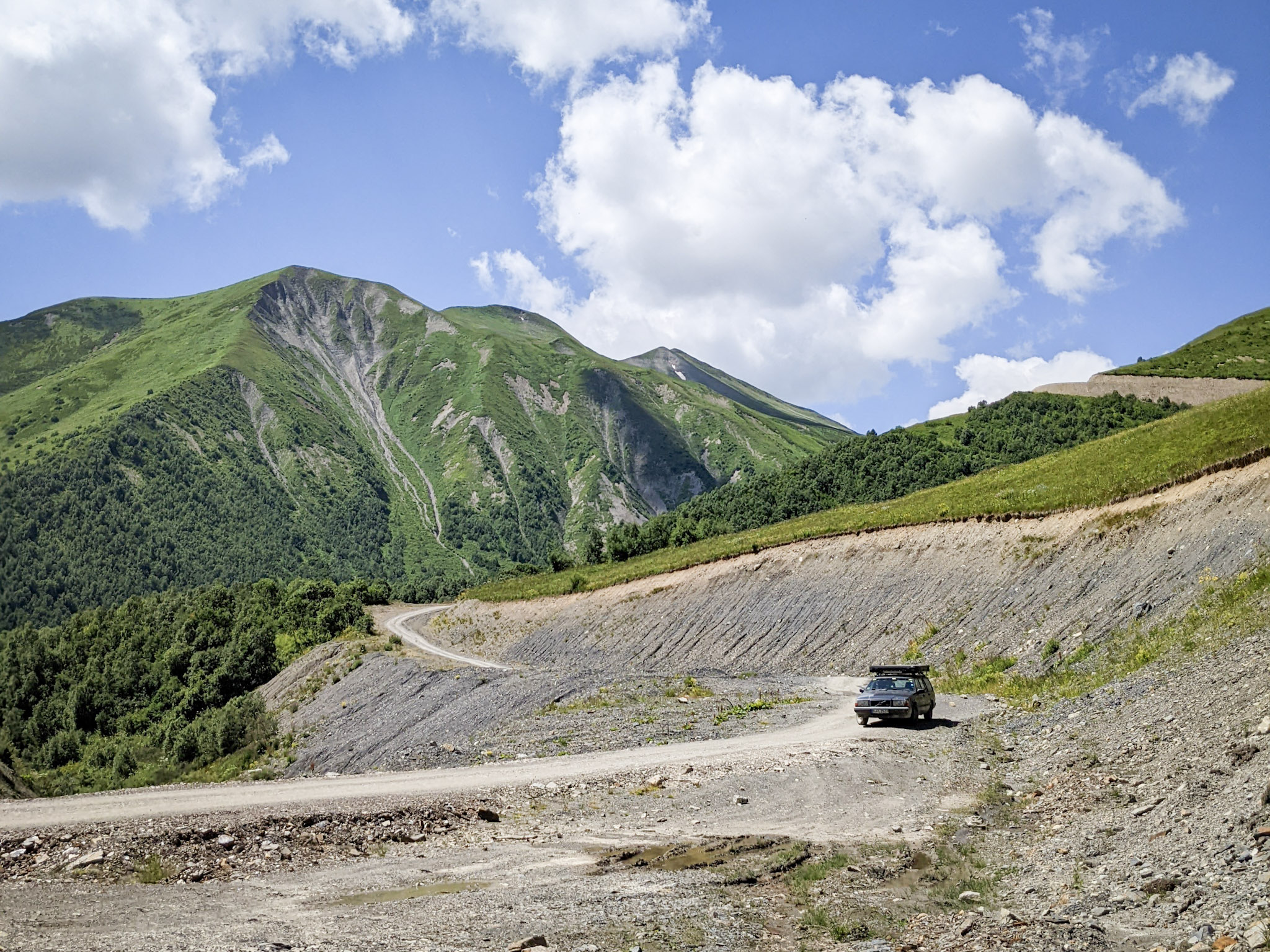Do you also envy them – the active pensioners, the good-looking twenty-somethings and the independent families who simply take one or more years off to travel the world? And are you as annoyed by those influencer types who are constantly in your ear, telling you that you only have to want it, that it’s all a question of mindset, that you should live this one life and just do it?
That doesn’t fit in with your own reality, does it? In which time and money are finite resources. Children go to school. You can’t afford or don’t feel like quitting your job. Perhaps you have relatives to care for or your own health limits your radius. Being told by social media know it alls that it’s all down to your inner attitude doesn’t get you any further.
It’s the same with us. My young co-pilot goes to school and has her circle of friends at home. I have a job that I like (which I in theory could do from anywhere, but I don’t really want to work while I’m travelling). Also with our family model, it would be quite hard to organise a longer-term break.
So what do you do if you still want to explore the world off the beaten track, for longer than your usual school holidays? May there be another way that doesn’t require you to completely throw your life overboard? — First of all: We don’t have a one-size-fits-all solution that works for everyone. Life paths are too different. But we do have an idea that we want to try out and report on: A long-term journey in stages.
How this came about: I conceived the idea on our trip through Armenia in 2022. We treated ourselves to a few relaxing days by the pool in the overlander hotspot, after a dusty time on the road and a proper car breakdown. We got to know a family who travelled the Caucasus and Central Asia in their van during the warmer months and stored their vehicle just here for the winter, until the weather was suitable for travelling again. I started thinking: Wouldn’t it be so much better not to have to drive 4,000 kilometres from Armenia back to Germany at the end of the summer holidays? But to just interrupt the adventure instead of ending it? At some point it clicked: we’ll split the big journey into stages! The car will stay where we leave it at the end of each stage and will wait for us. For the next stage, we will fly back to where the car is, get in and drive off.
Sure, we could hire a car for every leg. But that’s not as straight forward as it seems: You’d have to find one, hire it, pick it up, load it, unload it and hand it over again. If you require camping equipment with it, it becomes even more complicated and usually an expensive affair. And then you are often not even allowed to drive all the routes or across national borders. And let’s not even start on the various scams that many rental companies regularly try to pull on their customers.
Of course, there’s a bit of organisation involved in the whole plan. Each time, we will have to find a trustworthy parking space for the car in a foreign country. Another thing we won’t be able to avoid is that time will be limited for each stage. So we will have to prioritise what we are particularly interested in and where we want to spend our time. Because we actually like to travel slowly. Conversely, this means that there will have to be fast connecting stages in between, where I will reposition the vehicle between the leisurely stages of the journey.
The project also requires a vehicle that we won’t need at home. For a few months now, I’ve been preparing a 1990s Honda CR-V (robust, mechanical, economical, sufficiently capable off-road, sold all over the world) for travelling.
What we will get in return: We will be able to start our next adventure abroad at any time, with manageable preparations and without lengthy journeys there and back. We’re due to start this summer. We are curious whether it will go as we had imagined. — Well, it will probably turn out differently, as always. But surprises are the beauty of travelling, aren’t they? We will report back.
Translated to English with the help of AI.


Leave a Reply